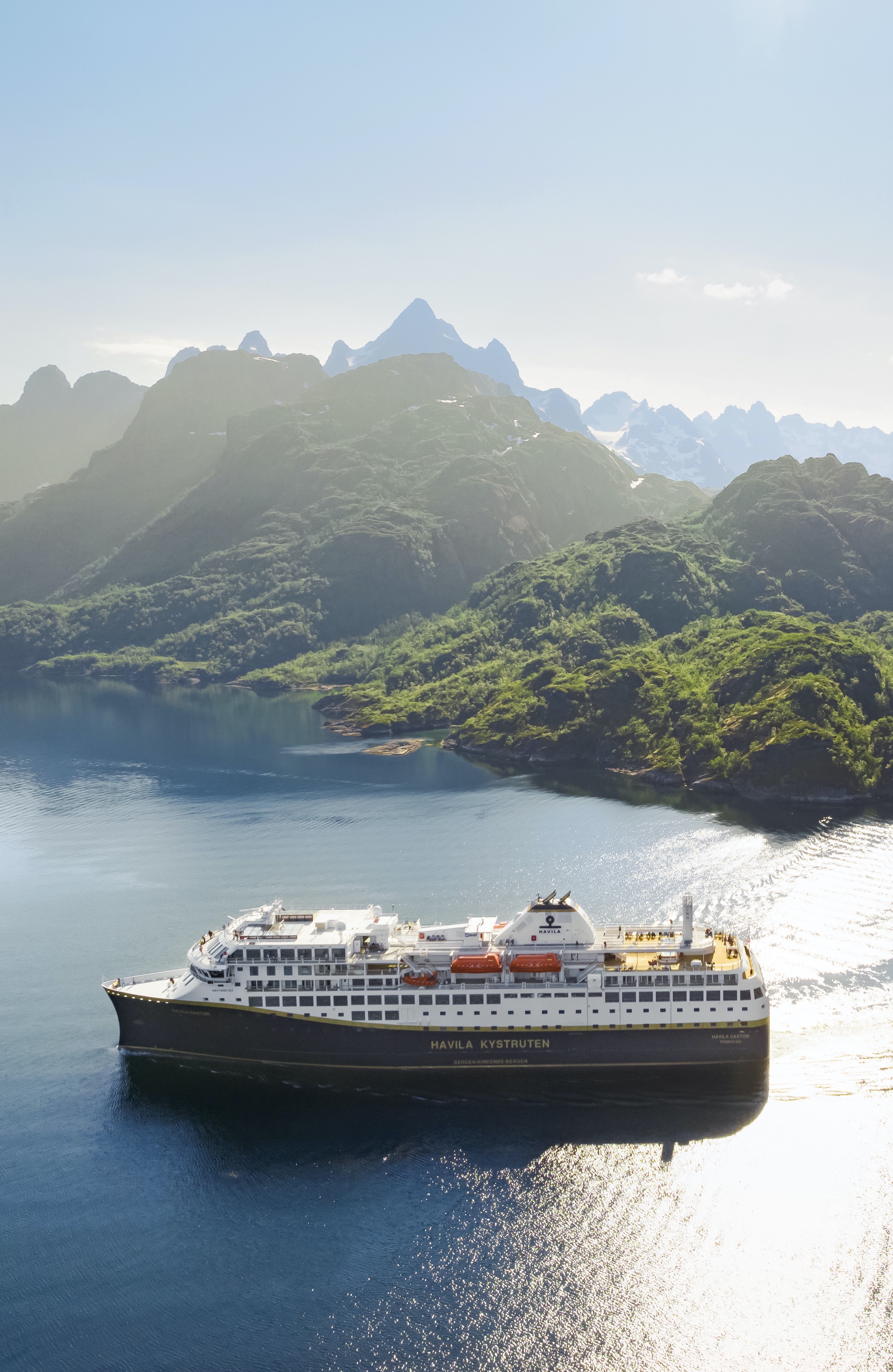
Top 5 Historical Locations to Visit in Norway
Not only is the Havila Coastal Voyage a wonderful way to slowly enjoy Norwegian scenery and local produce, but it is also a terrific way to learn more about Norway's fascinating history.
Dating back thousands of years with an interesting mix of religions, migration, customs, traditions and culture shaping the foundations of the vibrant and modern country we know today, here are some highlights worth exploring:
1. History of Bergen
Bergen was founded in 1070 AD, and is the geographical centre of Norway's stunning Western Coast. Thanks to a scatter of islands between the Byfjord (City Fjord) and the North Sea, Bergen's harbour stays protected and ice-free during winter, making it an ideal trade-port. Historically, this was a factor that saw Bergen rise from a small settlement to a busy and thriving city; even named Norway's capital from 1217 to 1299. During the early 14th century the German merchant guild Hanseatic League established their Northernmost bureau in Bergen. Their living-quarters in Vaagen remains (rebuilt and renovated throughout the centuries) and is today known as the famous Wharf - listed by UNESCO as a World Heritage Site.
Spend a couple of days in Bergen to enjoy walks in the narrow, steep laneways amongst traditional wooden houses, enjoy fresh seafood at the popular Fish Market and soak up the historic atmosphere at the impressive Wharf before embarking on your Northbound Norwegian Coastal Voyage along the beautiful coastline of Norway.
2. History of Ålesund
If you are a lover of Art Nouveau and Jugend-style architecture, look not further than Ålesund. An extensive city-fire in 1904 saw more than 850 houses lost to a blazing inferno. Global help in the way of emergency- and building supplies came from near and far, and the Ålesund we known today is a direct outcome of the rebuilding efforts undertaken in the years from 1904-1907. The complete reconstruction happened during the Great Depression and ensured work for local Norwegian craftsmen, builders and architects. The result can be enjoyed today: Ålesund is a beautiful Art Nouveau-town with quirky shops, cafes and galleries.
Climb the steps to the top of Mount Aksla and take in the view from above of a city that turned tragedy into triumph.
3. History of Trondheim
Trondheim is historically known as the religious seat of Norway, and was founded in 997 AD by Viking King Olav Trygvasson, favoured as a trading town due to its location by the River Nid. In the early days of Norwegian Christianity, a newly baptised Viking-chieftain Olav Haraldsson made it his life's mission to unite and spread the new religion across a divided Norway. Shortly after being killed in a battle near Trondheim in 1030 AD, King Olav was declared a saint. His nephew, King Olav the Gentle, built a basilica as a shrine to Saint Olav in 1066. The church, known as Nidaros, was completed in 1090 AD, and became a popular site for pilgrimage in medieval Norway. The church continuously expanded to accommodate the crowds, and in 1152, Nidaros became an archbishopric and the humble church became a cathedral. Building-works and expansion continued throughout the 13th century (and in every century thereafter), leaving the Gothic-style cathedral we can visit today.
Enjoy the peace and serene beauty of Nidaros, followed by a stroll through the nearby Bakklandet; the traditional old-town known for its colourful wooden buildings along the river. 
4. History of Lofoten
The Lofoten islands attract hordes of tourists thanks to their sheer beauty: Think crystal clear waters and rugged mountains, small charming fishing villages, Arctic nights in winter or a sun that never sets in summer. People have thrived in this spectacular region for thousands of years thanks to abundant fish in the ocean, cod in particular. Fishing is still the main-industry locally, evident in the many traditional stock-fish drying racks and fish processing facilities throughout the area. Lofoten has evidence of human settlement as far back as 11,000 years, with several artefacts dating from the Iron- and Viking Ages.
If you have the time, a visit to Lofotr Viking Museum in Borg near Vestvagoy is well worth the time to admire the 83 meter long reconstructed long-house, and to vividly experience an era long gone but still present through archaeological finds such as jewellery, weapons and ceramics.
5. History of Tromsø
Ever since the interest in Arctic research- and explorer expeditions peaked at the start of the 20th century, Tromsø has rightfully been known as the Gateway to the Arctic. While Tromso has rapidly grown into a thriving Northern-Norwegian 'Capital of the Northern Lights' with a booming tourism-industry, its history dates back thousands of years. Norway's indigenous population, the Sami, have roots in the area around Tromso and the nearby Lyngen Alps dating back more than 3000 years. A visit to the local Polar Museum introduces you to a journey through Tromsø's history, from rock-art and artefacts to the world-renowned Polar expeditions that put Tromso on the map. Visit the Fjellheisen cable-car and see this city from above; just as gorgeous in winter as in summer.

